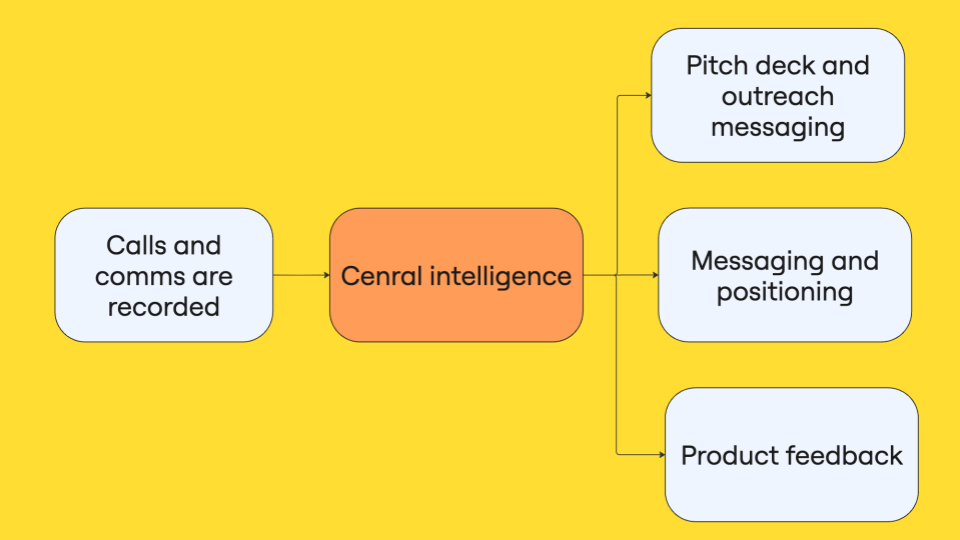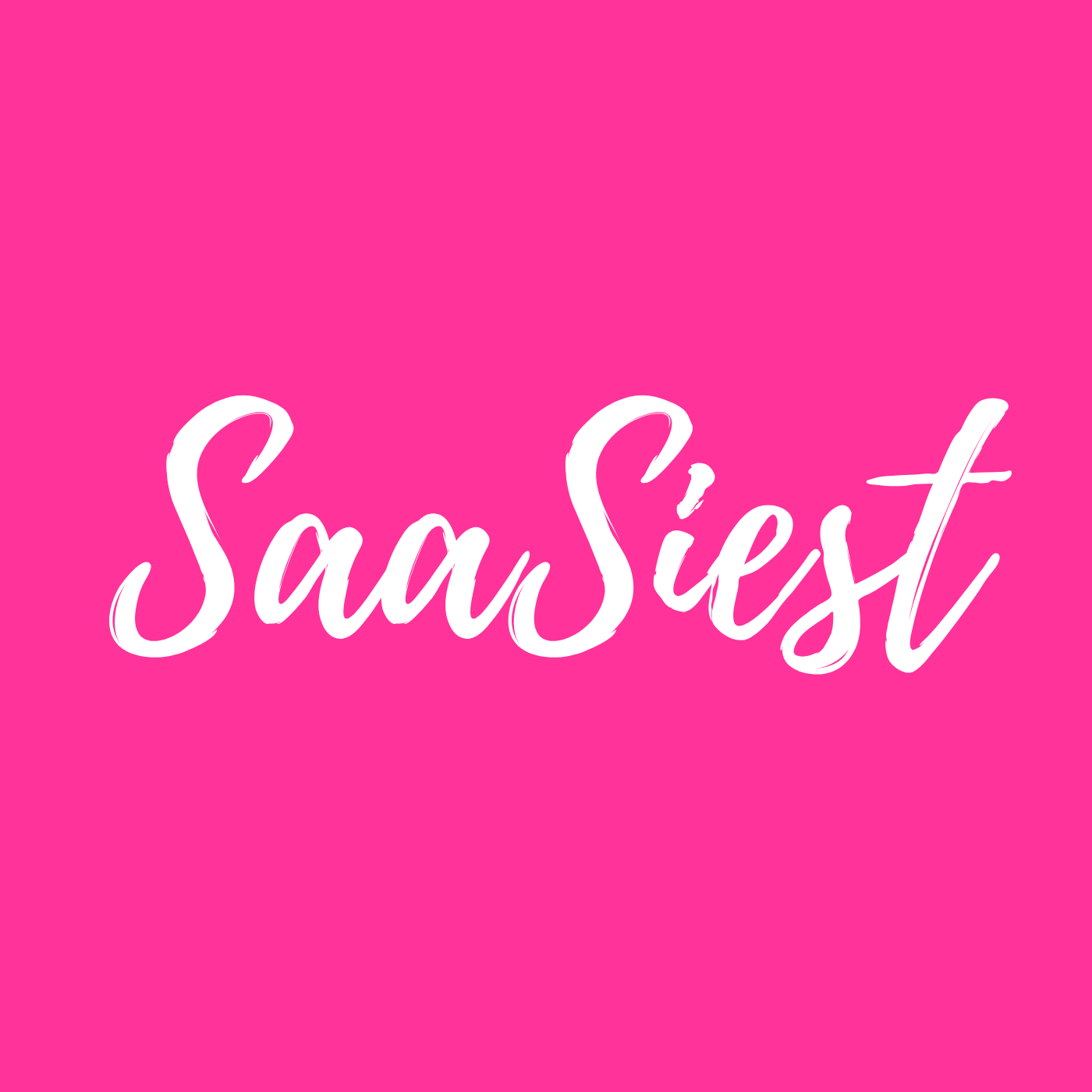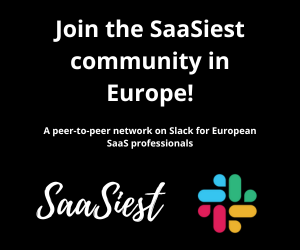For most SaaS companies, AI has accelerated what was already hard – moving fast while staying human.
For Anna Boyarkina, a founding member of Miro and a 14-year veteran of scaling one of the world’s most loved collaboration tools, this is the most exciting – and complex – moment in the company’s history.
“AI is changing not only how we work, but what we work on,” she said on stage at SaaSiest 2025. “It’s forcing us to rethink the role of humans in creation, collaboration, and discovery.”
Miro, once a simple digital whiteboard, has evolved into an Innovation Workspace for human and AI collaboration. Behind that transformation lies a story of reinvention – from a B2C app to a B2B platform, from digital native to AI native, and from product-centric to customer-obsessed.
This is how Anna and her team are rewriting the playbook for customer discovery in the age of AI.
From templates to transformation
Ten years ago, Anna launched the first Miro templates – a feature that quietly changed how millions of teams collaborate.
Now, she’s leading another shift: guiding Miro into the AI era, where teamwork isn’t just digital but intelligent.
Over the last few months, she’s been running enterprise pilots to understand how AI is changing workflows, customer needs, and even expectations of value. What she’s found is that while AI has transformed individual productivity, the real opportunity lies in collective intelligence.
“AI for personal efficiency is growing fast,” she explained. “But in team collaboration, its utility is still low. The gains disappear when work is scattered across tools and systems.”
In other words: when every employee uses AI in isolation, the organization loses alignment.
Miro’s challenge – and opportunity – is to bring those fragments together.

From digital native to AI native
Miro’s next evolution is about building products that don’t just digitize human creativity – they amplify it.
The team is moving from a single-product mindset to a multi-product ecosystem, built around what Anna calls an AI-native workforce.
To make that shift, she began with a simple but powerful question:
What is the role of the human, and what is the role of AI?
Her framework divides work by two factors:
- The complexity of the task
- The human advantage – where judgment, creativity, and empathy are required
When both complexity and human advantage are high, humans lead. When they’re low, automation wins. The challenge is that this line keeps moving.
“AI’s capability is a moving target. Every month, it’s able to take on more tasks. So we have to keep redefining what humans do best.”
For SaaS teams building with or for AI, this framework is a reminder that automation is never the goal – augmentation is.

Scaling customer learning with AI
The shift to AI-native work didn’t start with coding models or features. It started with customer conversations.
Anna and her team built what they call Central Customer Intelligence – a live knowledge base that collects and structures insights from every customer call.
They automated the process end to end: recordings feed into a database, which flows through Zapier automations and Gemini to extract insights, themes, and quotes.
The result?
The time to turn a new pitch deck or positioning idea from draft to iteration dropped from weeks to days.
But the technology was only half the story.
“The hardest part wasn’t building it,” Anna shared. “It was changing the habit – recording every call, documenting every learning, asking the right questions. Culture comes first.”
AI may accelerate learning, but it’s the human discipline around it that makes those insights actionable.
From listening to validating – faster
With AI, the speed of building has never been cheaper. But Anna warns that speed without validation is just noise.
“Insights don’t matter until they reach the market. The speed of validation is becoming more important than the speed of development.”
Her team now applies rapid validation loops – turning AI-generated learnings into experiments within days. Whether it’s messaging, product positioning, or customer decks, nothing is static.
AI helps summarize, draft, and simulate. But humans still decide what resonates.
That, she says, is the new advantage: judgment at speed.
The SaaS shift: from selling software to showing value
In an era where every company claims an “AI pitch,” the noise is deafening.
“Every vendor has their own version of an AI story,” Anna noted. “Customers are overwhelmed. They don’t want another pitch – they want to see the value.”
Miro’s response has been to show, not tell.
Instead of long presentations, Anna’s team dives into personalized demos within minutes, using AI to pre-fill context, brand assets, and use cases.
“Get to the demo faster,” she advised. “Show the castle, not just the building blocks.”
This mindset borrows from Palantir’s hybrid model, where services and solution design play as big a role as the software itself. In enterprise sales, helping customers see their own workflows come to life has become part of the product.
Co-designing with customers
Perhaps the biggest shift Anna sees is not in technology – but in mindset.
“Nobody has figured out exactly what the new world will look like,” she said. “We’re all learning it together.”
Miro now brings customers into the design process through co-creation programs, design bootcamps, and embedded innovation sessions.
Rather than guessing what users need, they build it with them – validating assumptions in real time.
The result isn’t just better products; it’s deeper partnerships.
When both sides share ownership of discovery, adoption follows naturally.
Building for human and AI collaboration
AI is transforming how SaaS products are built and how teams work. But for Anna, the real opportunity lies in combining the two.
“It’s not about replacing humans with AI,” she said. “It’s about giving teams the tools to do their best work – faster, together.”
Miro’s new Innovation Workspace is built around that principle. It’s not just a digital whiteboard anymore; it’s a connected system where insights, automation, and creativity coexist.
Behind every AI workflow sits a human one – with judgment, empathy, and context leading the way.
The next decade of SaaS won’t be defined by smarter tools, but by smarter collaboration.
Final takeaway
As AI reshapes the landscape of teamwork and product building, Miro’s evolution under Anna’s leadership offers a clear message:
Success will belong to those who blend human insight with machine intelligence – not those who choose one over the other.
“We’re not selling building blocks,” Anna smiled. “We’re showing the castle.”
🎥 Watch the full session from SaaSiest Amsterdam 2025 here: https://saasiest.com/customer-discovery-in-the-age-of-ai-human-x-ai-collaboration/




